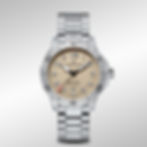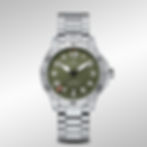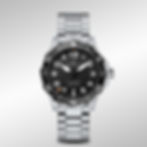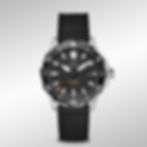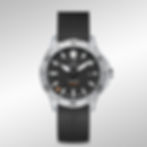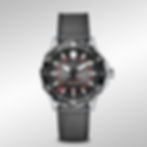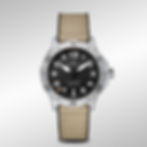

Königsberg in Prussia
The former capital of East Prussia is located at the confluence of the Pregel in the Fresh Lagoon. Even before the conquest by the Teutonic Order, there was a trading post of the Baltic Prussians here , which maintained intensive contacts throughout the entire Baltic Sea region.
After the Teutonic Order took possession of Baltic Prussia after 1226 with the blessing of the Roman-German Emperor and the Holy See, it created a dynamic state within a few years.
In 1255 an order castle was built on an elevation above the Pregel estuary, which was named 'Königsberg' in honor of the leader of the crusade, King Ottokar II of Bohemia. The independent urban settlements of Altstadt (1286), Löbenicht (1300) and Kneiphof (1327) were built around the castle, which were only united in 1724 by a royal decision to form the Royal Prussian capital and residence city of Königsberg. On this occasion, King Friedrich Wilhelm I donated the city coat of arms, which united the three coats of arms of the formerly independent cities under the Prussian Aar.
The Königsberg Cathedral , spiritual center and landmark of the East Prussian metropolis, was built on the Kneiphof in the city of Königsberg from 1330. After the Teutonic Order had lost its seat, the Marienburg, to Poland-Lithuania in 1457, the Knights of the Order moved their headquarters to Königsberg. When the Grand Master from Franconia, Albrecht von Brandenburg, from the younger line of Hohenzollern-Ansbach, was elected Grand Master in 1511, the Teutonic Order was politically at an end. Albrecht looked for new ways for his state, whereby he became increasingly enthusiastic about the teaching of the Reformation. Martin Luther himself advised him to transform the religious state into a secular duchy in 1525. Albrecht was the first hereditary duke in Prussia to swear the feudal oath of the Polish-Lithuanian crown, whose sovereignty he recognized.
Prussia was the first Protestant country in the world. From then on, world history was written from Königsberg. Duke Albrecht founded the Lutheran Albertus University in 1544, which was the second founding of a Protestant sovereign after Marburg. Their theological influence reached far beyond the country's borders. At the same time, Prussia remained a center of tolerance. In the spirit of the Reformation, Duke Albrecht promoted not only German but also the other languages of his duchy: Lithuanian, Polish and Prussian. During this time the city gained great importance for science and literature. The early baroque Königsberg poets' circle played a major role in German literature and one member, the poetics professor Simon Dach , created one of the most beautiful German love songs with Ännchen von Tharau.
Königsberg Chronograph

View of Koenigsberg
Finally, the Duchy of Prussia fell to the Brandenburg line of the Hohenzollern, whose Elector Friedrich III. crowned himself king in Prussia in 1701 in the Königsberg castle church. From then on, Königsberg rose to become the Prussian coronation city and was considered to be of equal importance to Berlin. From this core Prussia - later East Prussia - the Prussian state emerged and gave it the name Prussia. In 1724 Königsberg's most famous son saw the light of day, the philosopher Immanuel Kant . He made the city a center of the European Enlightenment. The 18th century saw many celebrities such as Johann Georg Hamann, Johann Gottfried Herder and ETA Hoffmann . Around 1800 Königsberg was one of the largest cities in German-speaking countries with 60,000 inhabitants. The East Prussian capital played a major role in the Napoleonic Wars, when General Yorck called for a war of liberation from here.
Königsberg Chronograph

Kaiser-Wilhelm-Platz
Königsberg was a major city for the first time in 1864 with 100,000 inhabitants. From 1860 the East Prussian capital was connected to Berlin via the Prussian Eastern Railway. Industrialization promoted massive emigration to the western territories of the empire, which also led to a loss of importance for Königsberg. As a result of the Versailles Treaty , East Prussia was separated from the rest of Germany by the so-called "corridor". Economically, East Prussia remained a crisis area that was hardly able to break free from its agricultural monostructure. On the eve of the Second World War, 372,000 people lived in Königsberg. Until 1945 Königsberg was the easternmost city in Germany.
After 1933, the Nazi terror became a raison d'etre, which led to the end of Jewish life with the deportation of the last Jewish residents in June 1942. In the summer of 1944, large parts of the East Prussian capital were destroyed by the Royal Air Force. 200,000 Königsbergers became homeless and 5,000 people lost their lives. After the Soviet offensive in mid-January 1945, Hitler declared Königsberg a fortress. The Wehrmacht under General Otto Lasch fought in a loss-making battle that lasted until the surrender on April 9, 1945. Hundreds of thousands of Königsbergers fell into Soviet hands; The surviving German civilians had to do forced labor and were resettled from northern East Prussia to Germany by 1948.

Synagogue on Lindenstrasse
Königsberg Chronograph
Finally the city, which officially bore the Russian name Kaliningrad since 4 July 1946, was placed under Soviet administration together with the northern part of East Prussia. Its namesake was the Soviet politician Michael Ivanovich Kalinin.
As Kaliningrad oblast, the region became part of the Russian Soviet Republic and after the Collapse of the Soviet Union in 1991 an exclave of the Russian Federation. 2010 Königsberg counted 431,000 inhabitants, what has developed into a dynamic economic metropolic, in the eastern Baltic Sea region.
The former landmark of Königsberg, its striking castle, sank into the rubble of the Second World War. The venerable cathedral shared the same fate. Thanks to a German-Russian initiative, however, it could be rebuilt. In its shadow is the tomb of Immanuel Kant.
Finally, Königsberg became famous for two culinary specialities: The famous "Königsberger Klopse" as well as the noble marzipan still tell of the former East Prussian metropolis at the Pregel river.
© Findeisen Uhren

Kant monument







